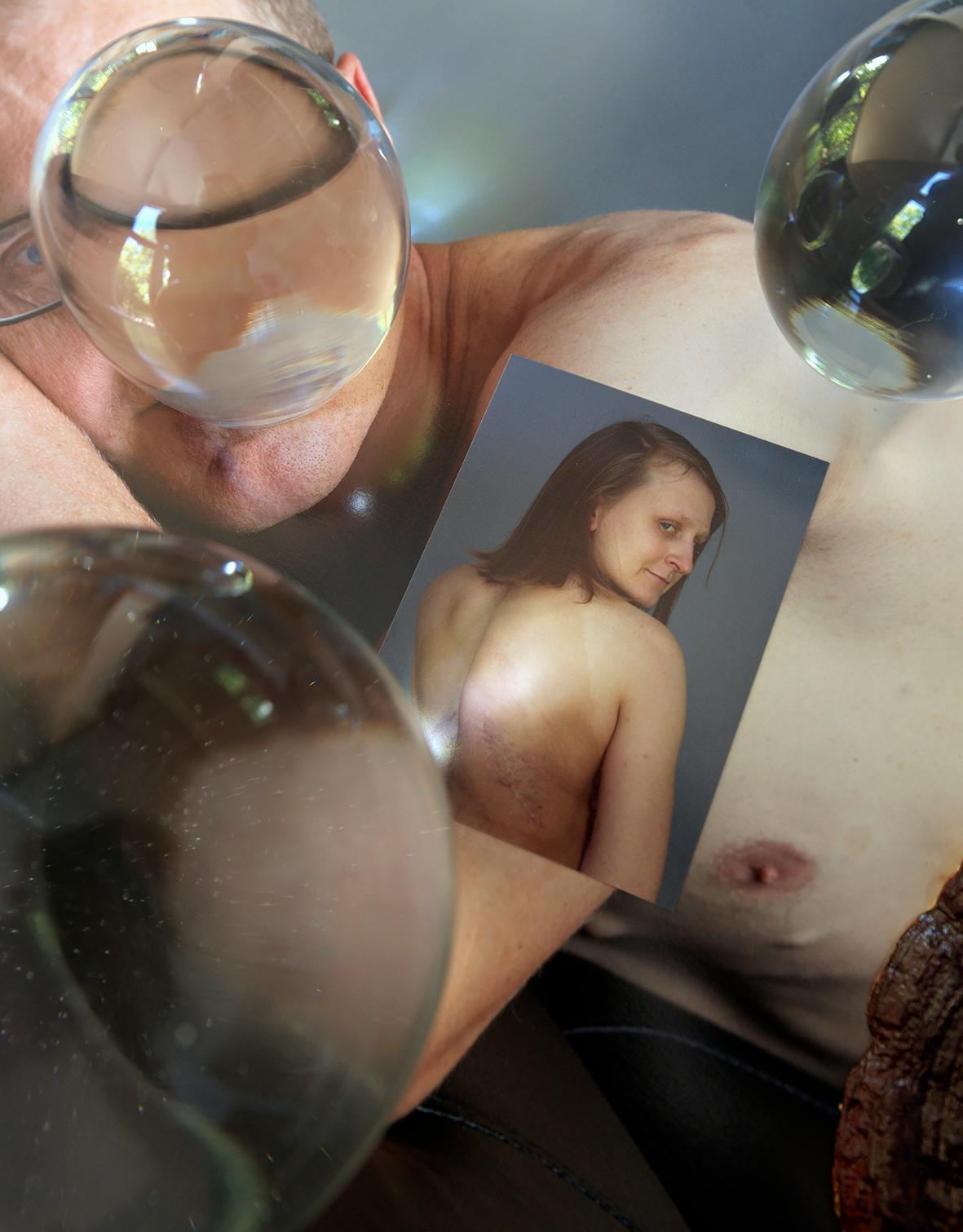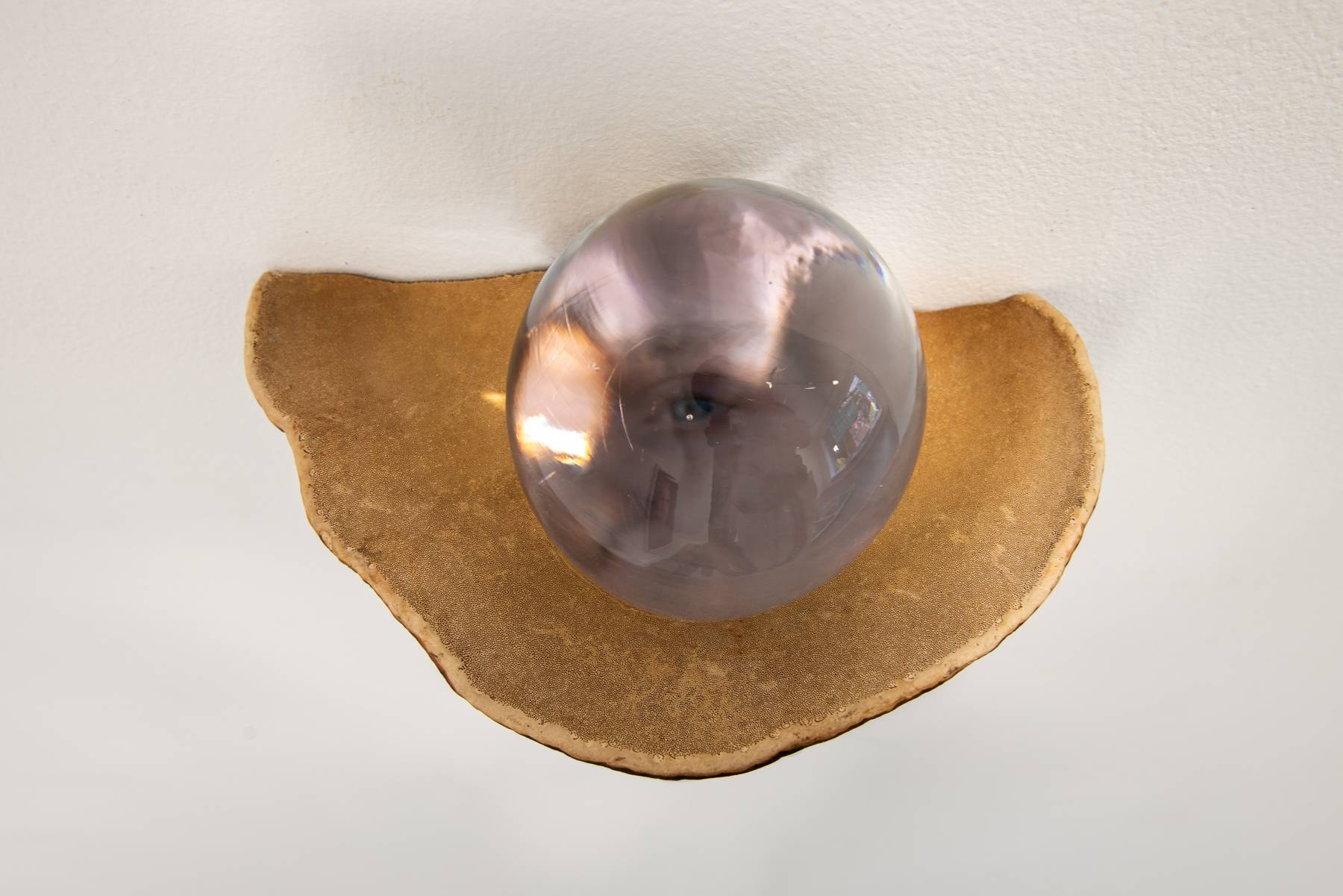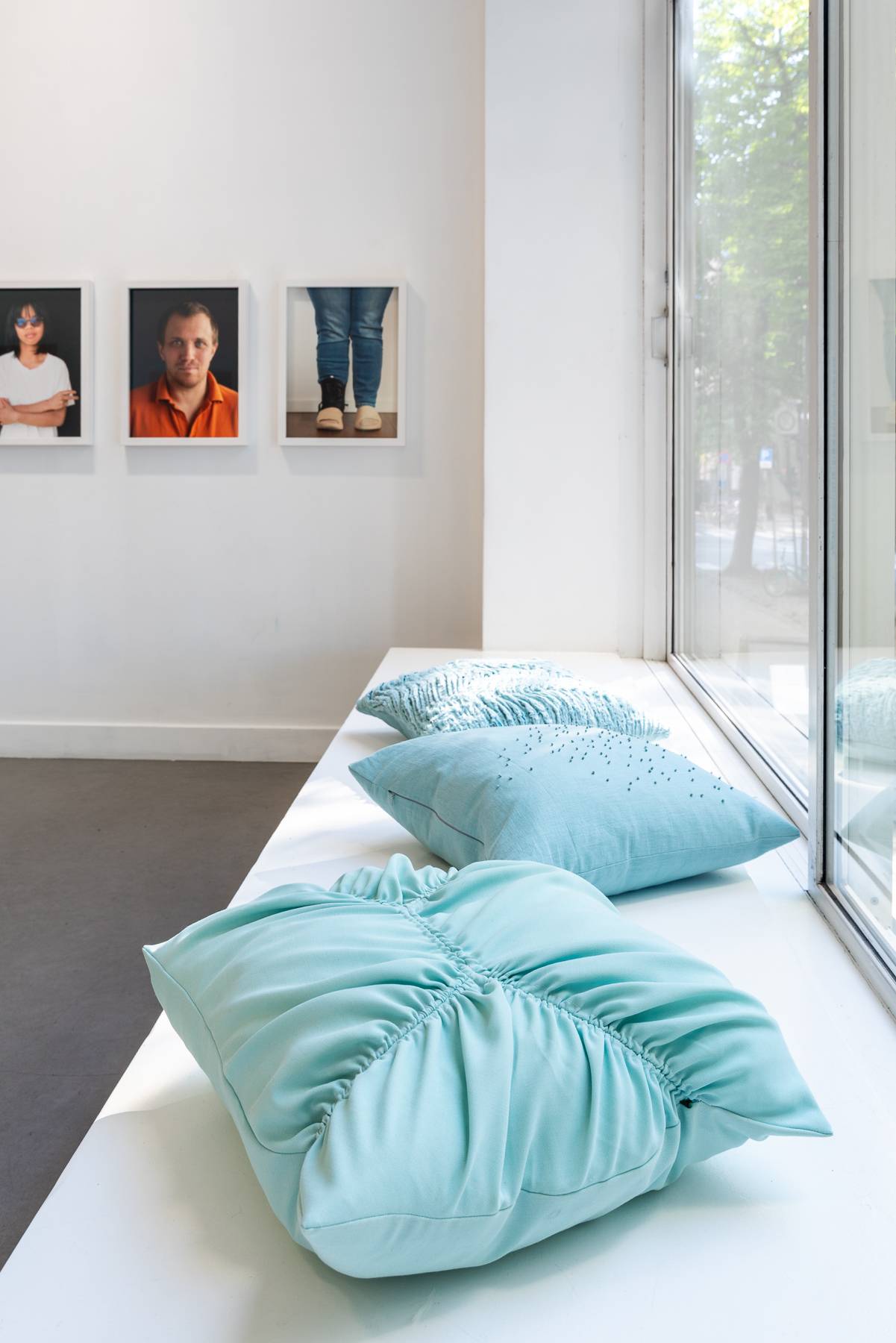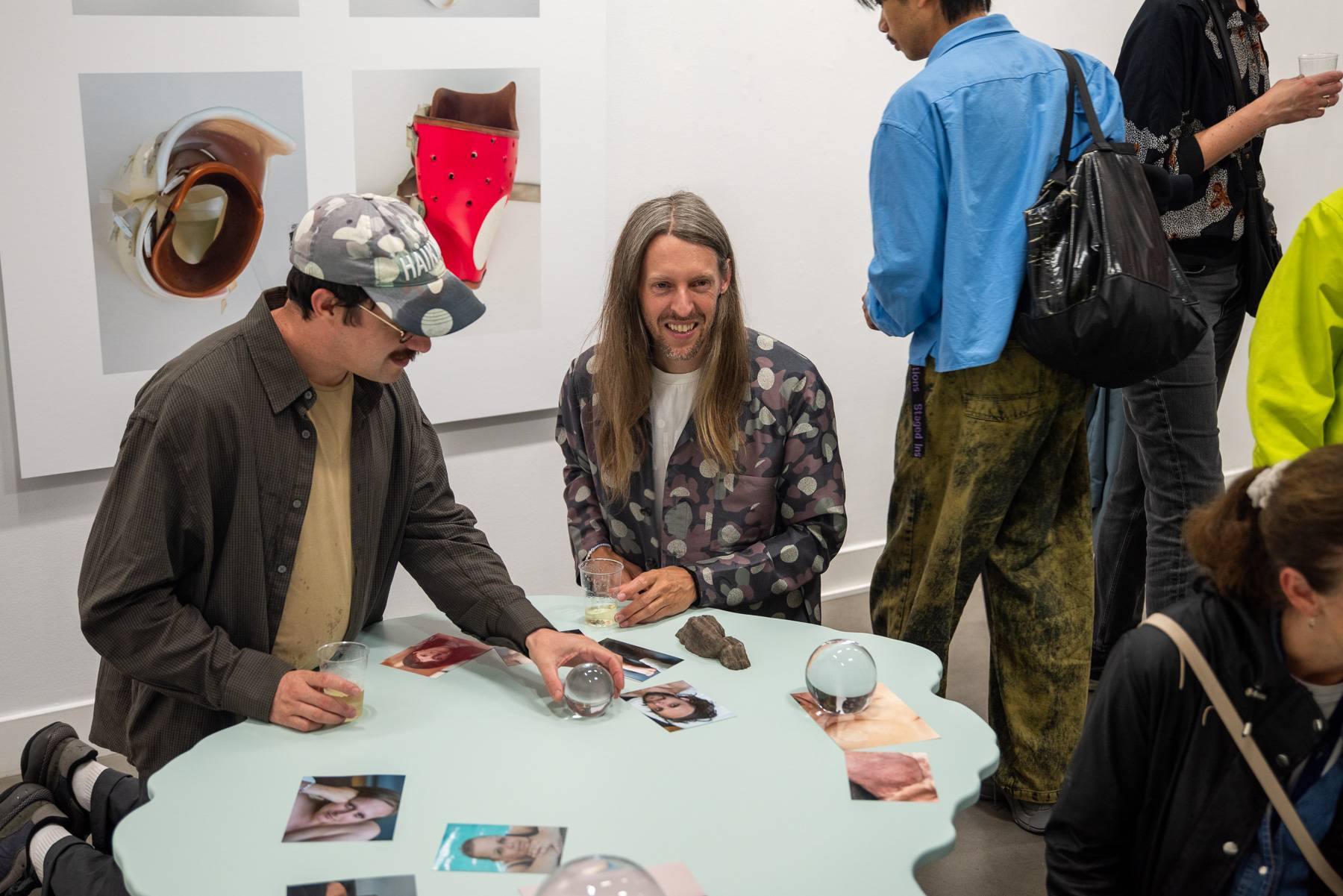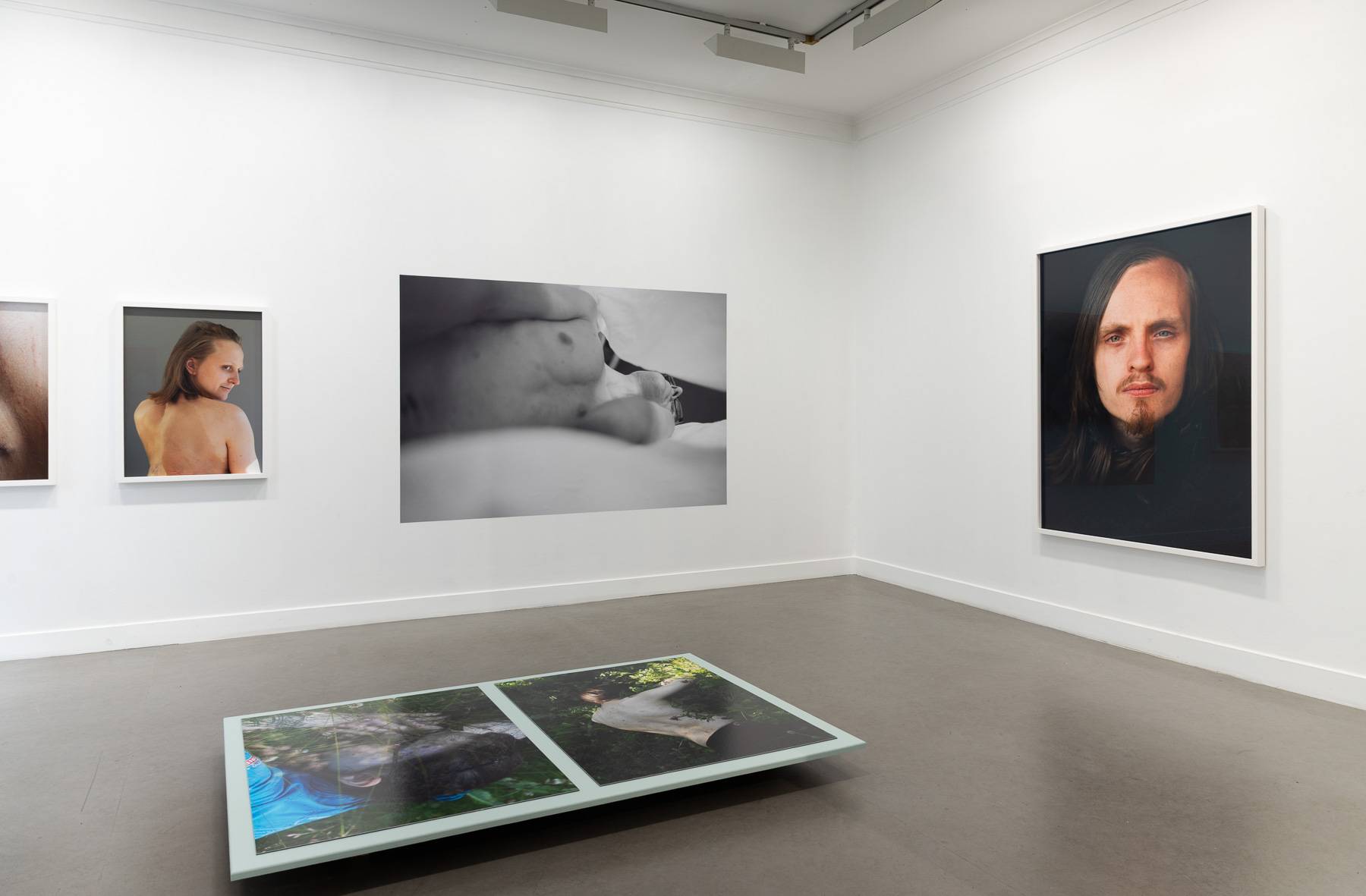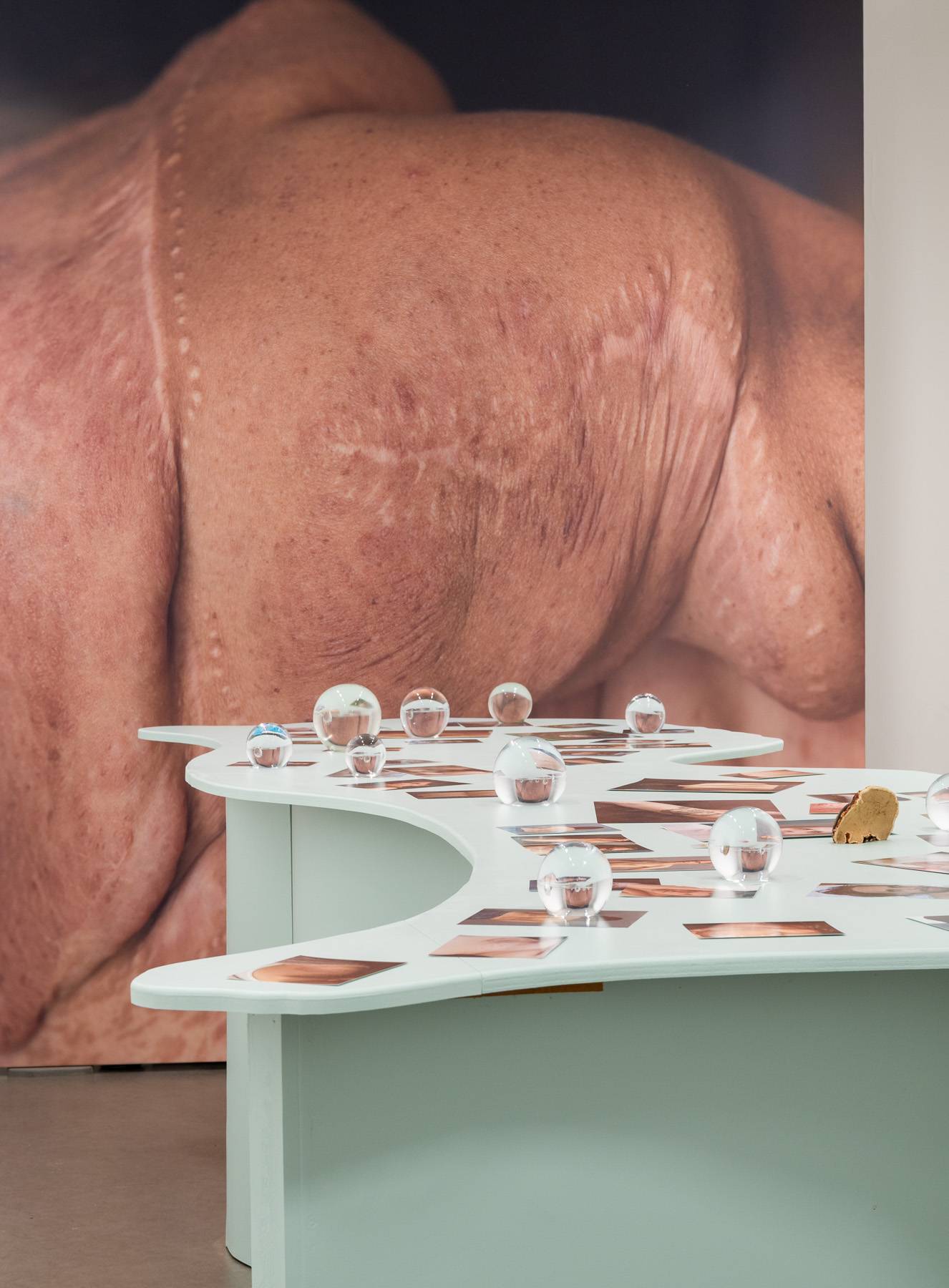Fin Serck-Hanssen
Fiberverk: Nevrofibromatose
[Fiber works / Fiber Aches: Neurofibromatosis]
The Window Room and the Cabinet
11.09.—12.10.2025
In the exhibition project Fiberverk: Neurofibromatosis [Fiber works / Fiber Aches: Neurofibromatosis], Fin Serck-Hanssen portrays people that are diagnosed with neurofibromatosis (NF). For this project, he has collaborated with actress and NF representative Ellen Terese Nilsen, author and curator Bjørn Hatterud, clothes- and exhibition designer Harald Lunde Helgesen, visual artist and curator Benjamin Slotterøy, as well as composer and sound designer Amund Ulvestad. The project also includes ‘NF-ers’ – as models, knowledge-bearers, and narrators.
NF is a rare genetic diagnosis in which connective tissue tumours grow in the body’s nervous system. In NF type 1, the tumours affect the skin, the peripheral nervous system, and the skeleton. In type 2, the central nervous system is directly affected, along with the spinal cord and the brain. NF tumours grow throughout life, and it is common to have to repeatedly undergo surgeries as new tumours develop constantly, causing problems and the need to be removed.
Most people with NF have a different skin. In addition to the tumours and a multitude of scars, many people who suffer of NF have distinctive chocolate milk-coloured rashes which can cover large parts of the body. The combination of tumours, scars, and rashes happens to often develop on the neck, throat, scalp, and face.
The health of people with NF varies greatly. Some suffer of major orthopaedic changes. Some NF-ers die prematurely because the condition can lead to develop forms of cancer. Some people lose their sight, and many develop neuro-variations such as ADHD or dyslexia. A widespread feature is to have dark circles under the eyes or brown spots around the pupil – which give a rather distinctive, sharp, and beautiful glance. At the same time, some people that are diagnosed with NF live without any visible functional impairments, as long as they are dressed and their skin is covered.
There is no doubt that many people with NF have a tiring life. Nevertheless, Serck-Hanssen doesn’t want to fixate ideas about physical difference as something negative, as something one would want to remove or fight against. On the contrary, this project gives space to bodies that the audience rarely sees and reminds of the social constructs for what is considered a beautiful body. The audience is reminded that narrow beauty standards prevent seeing the beauty in people who are different.
People with NF live in the same culture as everyone else, where one is expected to present and construct oneself through photographs in social media. Contemporary self-representation often consists of showing bodily perfection. A perfect body is achieved using the right lighting, digital filters, and strict self-control, and a perfect skin is also part of the expectations for a youthful, vital, and successful lifestyle. In social media it is very popular to show training, running, strict diet regimens, product placement for skin care articles, and plastic surgery procedures.
Such contemporary culture can be experienced as exclusionary if the skin is different and when the functions or shapes of the body are outside of the norm. Reactions to society's demands for appearance can transform into a culture of shame, in which people with different bodies will hide. It is important to remember that although bodies can have disabilities, it is society that creates the disabled. People with disability become disabled by socially created norms for bodies, appearance, and cognition. It is discrimination that keeps people out of working-, social-, and cultural life or out of the media landscape – not the body.
In Fiberverk: Nevrofibromatose, people with different bodies have collaborated with Serck-Hanssen and taken control of their self-representation, using the photographer as a tool. The exhibition challenges established notions such as that the photographer is the acting subject and the subject the passive object, and that people with disabilities are inferior to people without disabilities. Among younger disability activists, it is common to refer to disabilities as norm-breaking variation of function. This norm-breaking perspective is explored in the exhibition. Norm-breaking bodies represent, carry within themselves, and communicate norm-breaking beauty. In the exhibition, the audience can get up close to the beautiful bodies of people with NF.
In addition to the photographs, the exhibition includes sounds and tactile experiences. The audience can listen from pillows to NF-ers narrating their life stories, while the installations of tables and pictures emit sounds created by microphones when in contact with NF-skin’s distinctive patterns. Lastly, the audience can sense and touch a multitude of balls, lumps, and patterns – so that if one has not been given a beautiful norm-breaking body, it will be possible to feel what one is missing out.
Fin Serck-Hanssen (b. 1958) is an artist and photographer educated at Derby College of Art. Since the early 1980s, he has worked to document and portray a range of people from vulnerable, stigmatised, and underrepresented communities – such as North Sea divers, torture survivors and ME-patients. Well-known projects include Skeive Ikoner [Queer Icons], Tema AIDS, Hedda, In Between Pictures, Gaywatch, and Ti Blå Menn [Ten Blue Men].
Ellen Terese Nilsen (b. 1992) is a trained child- and youth worker and has extensive theatre experience as an actress, set designer and costume designer. In addition, she has held various positions in the Norwegian Association for Neuro¬fibro¬matosis and Ryggforeningen [The Back Association] for many years, where she has given lectures, organised activities for members, and worked with peer support.
Bjørn Hatterud (b. 1977) is an author and curator. His book Mjøsa rundt med mor [Around Lake Mjøsa with Mother] earned him the Critics’ Prize (Kritikerprisen) and the Libraries’ Literature Prize (Bibliotekenes litteraturpris). As a curator, he has worked for KORO – Public Art Norway, KODE Bergen Art Museum, the National Library and the Vestlandsutstillingen exhibition – among others. Together with Jan Grue and Olaug Nilsen, in 2021 he received the Fritt Ord Foundation Prize for his ‘strong contribution to highlighting the social situation and culture of expression for people with disabilities in Norway’.
Benjamin Slotterøy (b. 1966) studied at Glasskolan in Kosta (Sweden), Edinburgh College of Art (Scotland), Konstfack in Stockholm (Sweden), and Kunsthøgskolen in Bergen (Norway). He has been responsible for several projects at Sleneset, such as Periferi PINK and Havets menn, and has initiated, produced, and curated Kunst i havgapet – a large international art festival. Slotterøy’s work is represented in collections including KODE Bergen Art Museum (Norway), the National Museum in Stockholm, The Glass Factory in Boda, the Röhsska Museum in Gothenburg, and the Småland Museum (Sweden).
Amund Ulvestad (b. 1982) is a composer and sound artist, educated at the Norwegian University of Science and Technology (NTNU). He works with theatre, performance, and installation. Ulvestad has worked at most Norwegian theatres, in independent productions, exhibited at Galleri Nord and Trøndelag Centre for Contemporary Art, as well as exhibiting and performing in China, Europe, Mexico, the US, and Canada. He is affiliated with the literature research project Temporal Communities at Freie Universität in Berlin (Germany), is a guest lecturer at the Academy of Performing Arts, Weißensee Kunsthochschule Berlin, and NTNU, Trondheim.
Harald Lunde Helgesen (b. 1985) holds a MA in design from Oslo National Academy of the Arts (KHiO). In 2012, Lunde Helgesen formed the collective clothing brand HAiKw/ together with Ida Falck Øien and Siv Støldal, which exhibited at venues including F15, Golsa, Bomuldsfabriken, and the National Museum. Meanwhile, he also worked with creating costume designs for contemporary dance productions with Landing and Supernova – among others. In recent years, he has worked with exhibition designs for visual arts and for The Cultural Schoolbag (DKS), and developed the design think tank Matter/Matters, which addresses fashion practices in contemporary culture.
The exhibition is supported by Bergesenstiftelsen, Norske Fagfotografers Fond, Norsk Fotografisk Fond, Arts Council Norway, Fond for lyd og bilde and Notam – Norwegian Centre for Technology, Art and Music.

